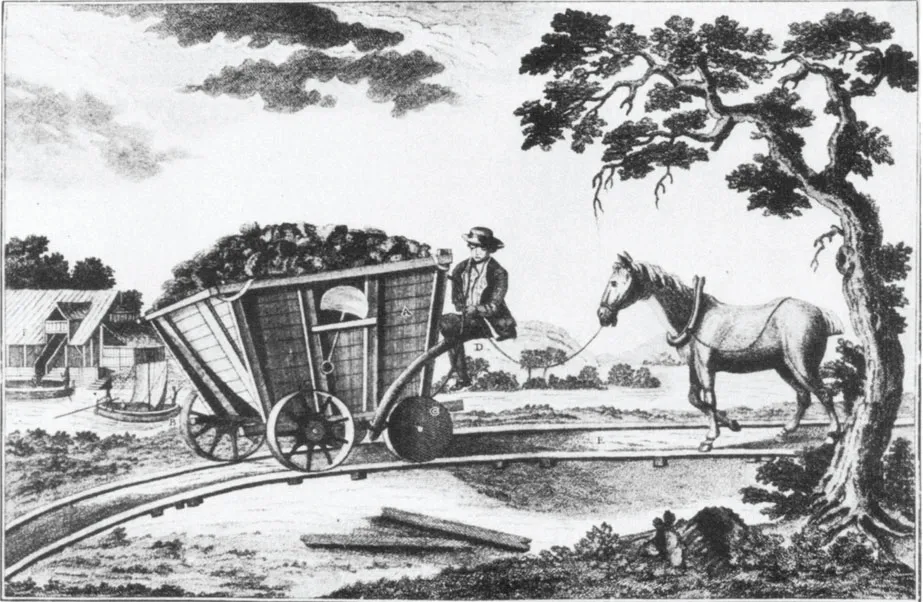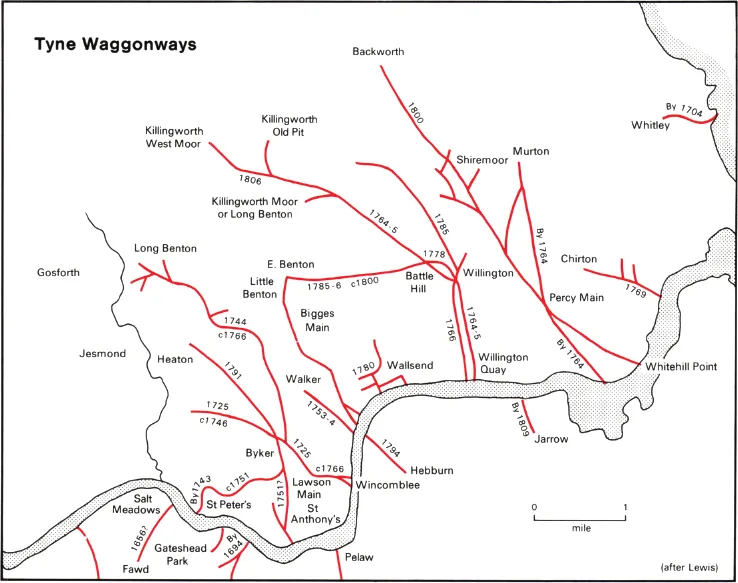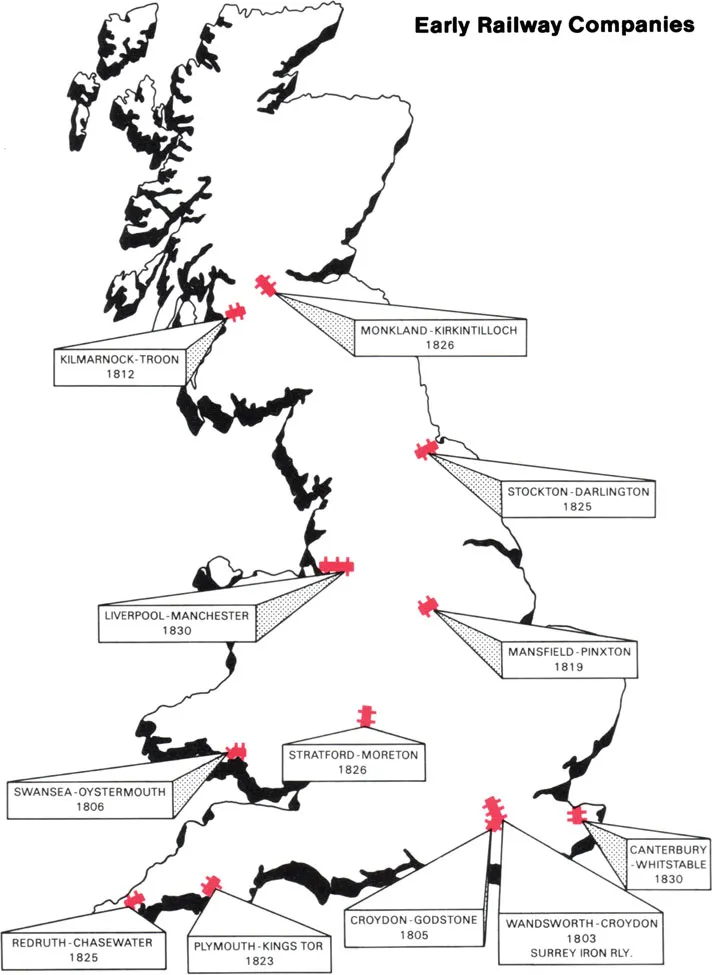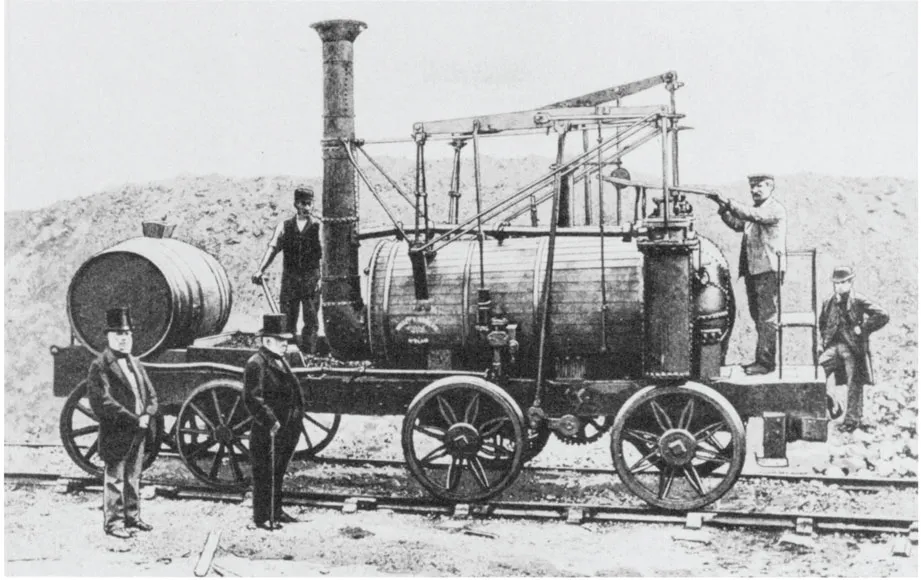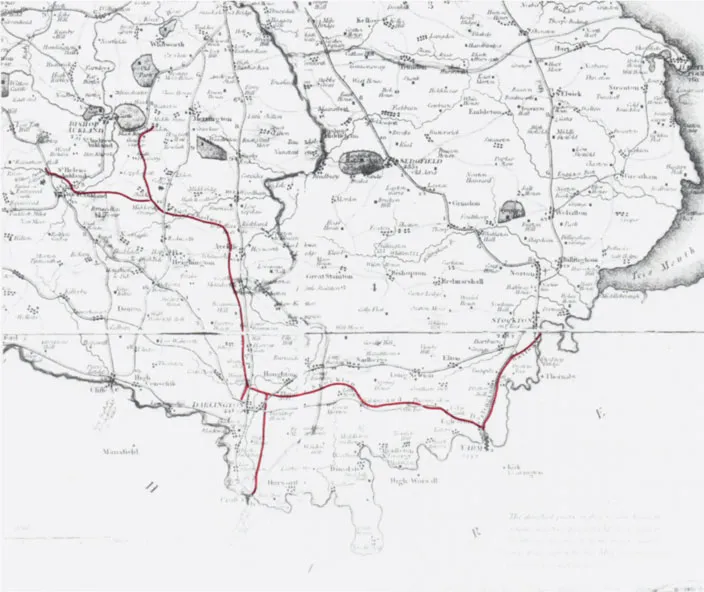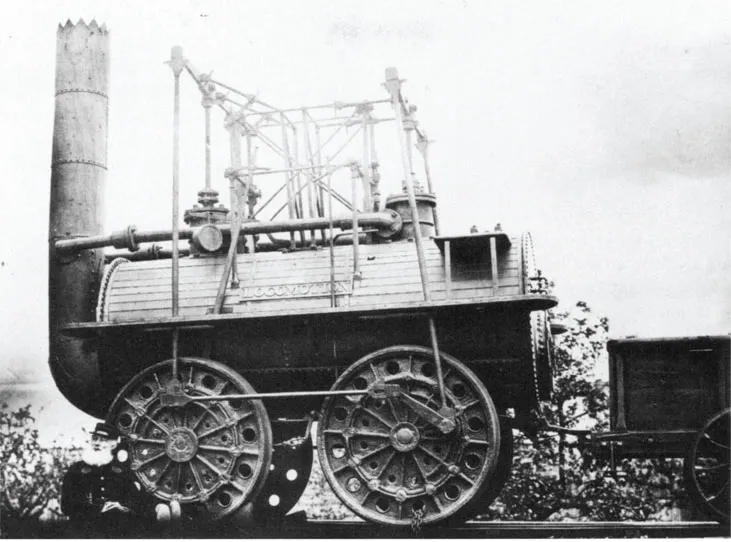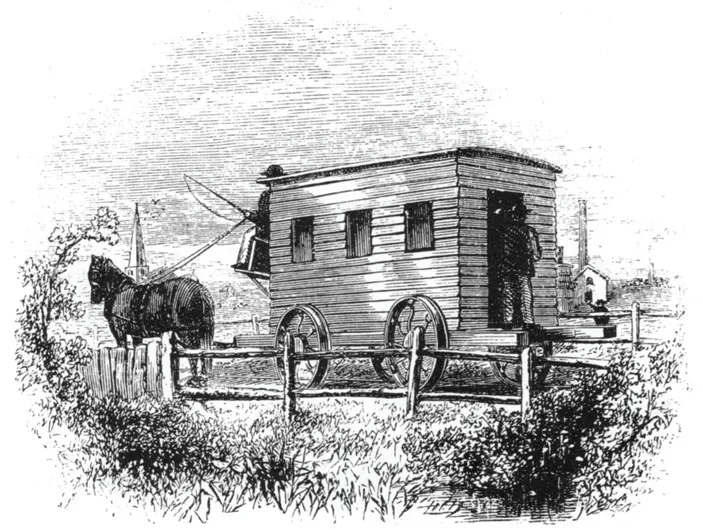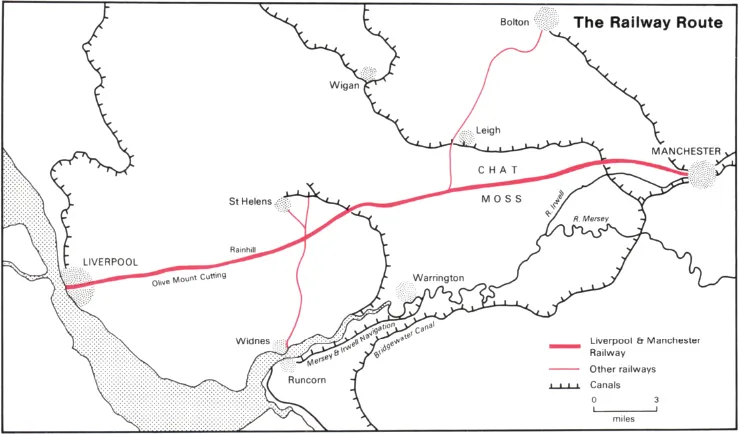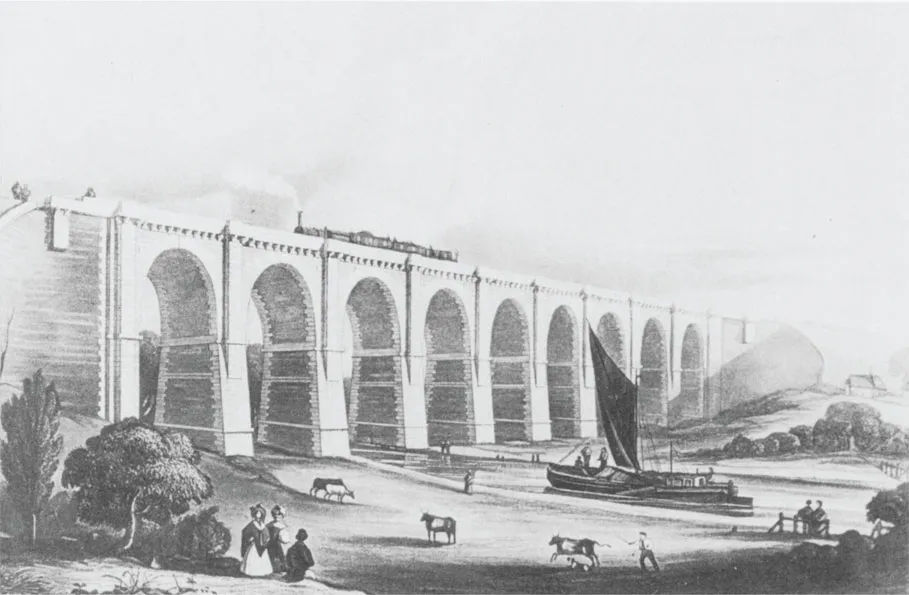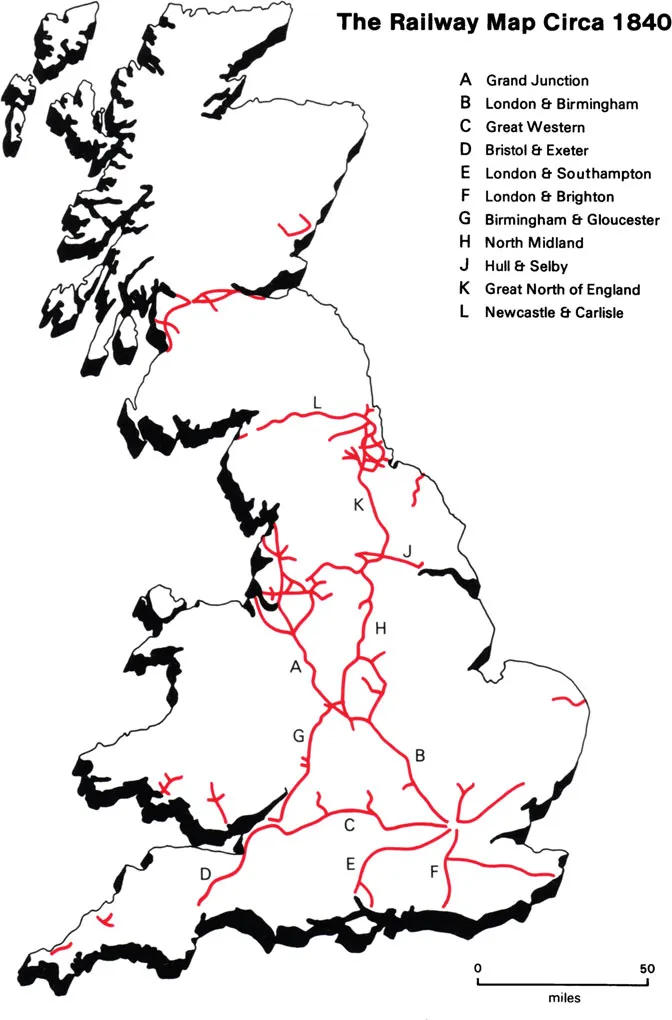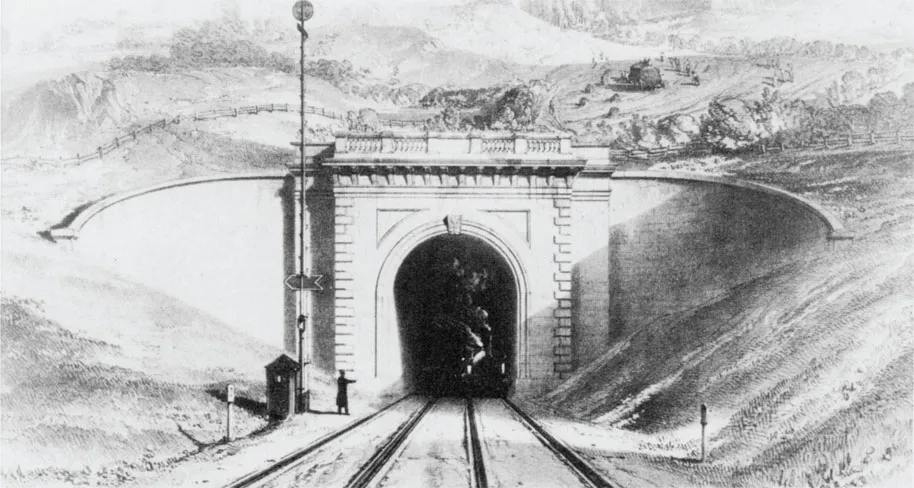![]() PART ONE
PART ONE![]()
PRECURSORS
The railway principle is not a modern one. The Greeks used ‘rutways’ to reduce tractive effort. The Romans laid down flat blocks of stone to reduce friction on chariot wheels. However, the truest precursors of the modern railway were the mining waggonways of central Europe, laid from the sixteenth century. The first British waggonway probably came in to use around 1630 to serve collieries near Newcastle. On the early systems rails were made of timber and wore down easily. Subsequently, therefore, iron plates were fastened to them, giving the term plateway.
Plate 1: A laden coal wagon descending to a riverside coal staith.
Later still, the plate rails were replaced with cast iron ones; the great Coalbrookdale Ironworks made its first cast iron rails in 1767. At first, waggons were prevented from slipping off the tracks by incorporating a flange into the rails, but in 1789 a feeder railway to the Loughborough Canal transferred the flange to the inside of the wheel and this provided the model upon which construction is based today. The map below depicts part of a waggonway system which extended inland for a total of sixteen miles and southward to the River Wear for another ten miles.
Waggonways on the lower Tyne in Northumberland in the eighteenth century, with dates of opening and closure where known.
![]()
BIRTH
Plate 2: One of the locomotives built by William Hedley for use on the Wylam Colliery Railway, 1813.
By 1800 there were many hundreds of miles of wooden waggonways and plateways, especially in the extensive mining districts of the North East, the Midlands and South Wales. But they attracted little attention from the public at large. There were no lines carrying passengers, while the colliery systems, for all their numerical significance, were essentially piecemeal in conception, ephemeral in existence and primitive in engineering. The watershed was reached in 1801 when Parliament passed an Act enabling the Surrey Iron Railway Company to construct part of a line from London to Portsmouth. Although the technology was still primitive, the scheme established the first railway company and the first public railway. It brought the railway principle before the eyes of legislators and, by the proposal to link London with the naval arsenal of Portsmouth, widened ideas about the railway’s potential geographical significance. Between 1801 and 1821 some nineteen further Acts were passed. Among these, the Swansea and Oystermouth Railway provides the first authenticated instance of the carriage of passengers. The first railway companies were evenly spread throughout the country. Some had grown from a tradition of waggon way-working, but others had no such connection — witness to the railway principle’s widening currency.
![]()
PIONEERS 1: STOCKTON AND DARLINGTON
To even the most disinterested of laymen, the Stockton and Darlington Railway is well known as a landmark in railway history. It was not the first public railway. But it was the first public railway regularly to employ steam locomotives to haul wagons of goods and carriages of passengers. The railway was conceived as a more efficient means of carrying coal and other minerals from Darlington and its vicinity to Stockton, the River Tees and thence to the sea. The gestation period was exceedingly protracted. Plans were first mooted in 1810 and for nearly ten years there was an argument whether a canal would be better than a railway. Eventually an Act was obtained in 1821. It comprised 67 closely printed pages, incorporating the whole of the law relating to railways. In its original form the Act provided for haulage by men or horses. It was thus little different from its immediate predecessors. Shortly after this, however, George Stephenson became involved in the scheme and, through his influence, the Act was amended to allow the use of stationary and moveable steam engines, the former for installation on two inclined planes. The railway opened to traffic in September 1825 and was an immediate success. On the first day it was shown that, on an incline, one engine could draw a train of 80 tons at ten to fifteen miles per hour. As anticipated by its promoters, coal formed the primary traffic. There was a limited conveyance of passengers, arranged not by the railway company but by local road carriers.
Smith’s map of the County of Durham (1827) showing the line of the Stockton and Darlington Railway and its various branches.
Plate 3: George Stephenson’s Locomotion, built for the Stockton and Darlington Railway in 1825.
Plate 4: Horse-drawn passenger carriage on the Stockton and Darlington Railway, 1825. As yet the steam locomotive had no monopoly over traction.
![]()
PIONEERS 2 LIVERPOOL AND MANCHESTER
While the Stockton and Darlington Railway was coming into being, another railway venture was being planned which later stole the limelight and laid counter-claim to marking the beginning of the railway age. The Liverpool and Manchester Railway was conceived in the early 1820s as a result of rising dissatisfaction with existing road and water conveyance. Monopolistic practices among waterway proprietors, which raised freight charges to exorbitant levels, were a key element. But there were also growing logistical problems for trade between the two towns. The cotton industry was by 1820 growing on such a scale that, whatever the charges, existing transport capacity was hopelessly inadequate. A company for the railway’s promotion was formed in 1824 and after much opposition from local landowners and within Parliament an Act was obtained in 1826. As an engineering project the line faced some formidable difficulties, including the making of a cutting 70 feet deep and nearly two miles long at Olive Mount, and the crossing of the immense bog called Chat Moss. Construction was almost complete by the end of 1828, but a decision remained to be made on the motive power to be employed. Initial ideas had favoured cable haulage operated by stationary engines. Later, the directors were persuaded to employ locomotive engines and instituted the now famous Rainhill contest to find the most suitable design. George Stephenson, already resident engineer on the line, won the contest with the Rocket and seven further Stephenson locomotives were ordered for the formal opening on 15th September, 1830. The Liverpool and Manchester lays claim to being the prototype of the modern railway because it used locomotive engines throughout its length, was the first to take seriously the carriage of passengers and was motivated by public welfare as well as private profit.
Plate 5: Liverpool Edge Hill, showing the tunnels down to Wapping and the cables used for drawing the trains.
Plate 6: Sankey Viaduct on the Liverpool and Manchester Railway.
![]()
A NETWORK CREATED
Plate 7: The monumental portico of Box Tunnel, near Bath, on Brunel’s Great Western Railway.
The Liverpool and Manchester met with a level of success which even its most optimistic promoters had never dared forecast. There were teething troubles in operation, but financial...

